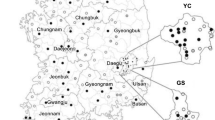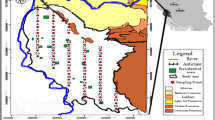Abstract
Validated analytical procedures for the determination of 21 organochlorine pesticides have been applied to 74 water samples, 76 soil samples, and 160 vegetable samples from nine Sene-Gambian farms. Mean pesticide residue levels found were compared to the results of other studies. The main contaminants were DDTs in water (231.9 ng/L), in soil (71.4 ng/g), and in vegetables (5.03 ng/g). The distribution of pesticide residues in water and neighboring soils and the soil–plant transfer of these pesticides is briefly discussed. Different bioconcentration factors for sum HCHs, sum DDTs, and sum endosulfans obtained in this study allow us to confirm the complex processes already reported in the literature concerning the uptake and translocation of chemicals from soil to plant.
Similar content being viewed by others
Author information
Authors and Affiliations
Additional information
Received: 22 January 2002/Accepted: 6 August 2002
Rights and permissions
About this article
Cite this article
Manirakiza, P., Akinbamijo, O., Covaci, A. et al. Assessment of Organochlorine Pesticide Residues in West African City Farms: Banjul and Dakar Case Study. Arch. Environ. Contam. Toxicol. 44, 0171–0179 (2003). https://doi.org/10.1007/s00244-002-2006-5
Issue Date:
DOI: https://doi.org/10.1007/s00244-002-2006-5




